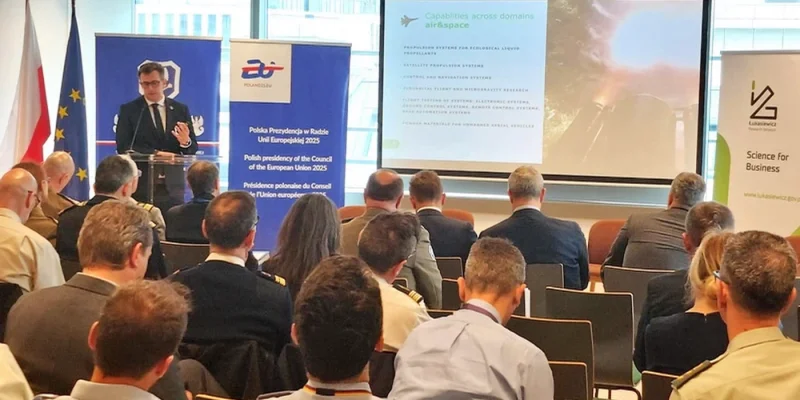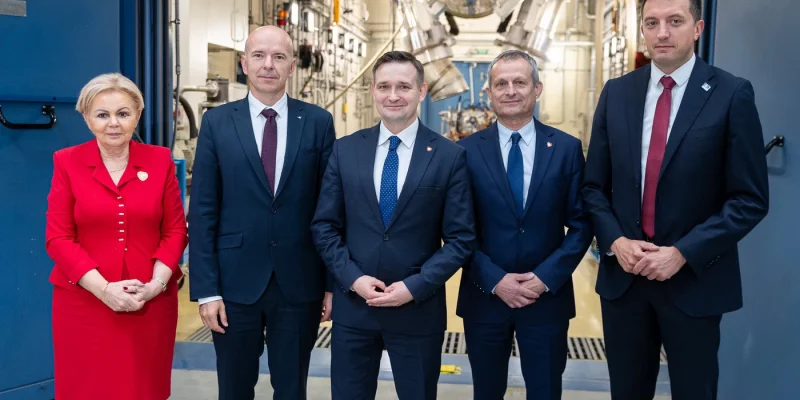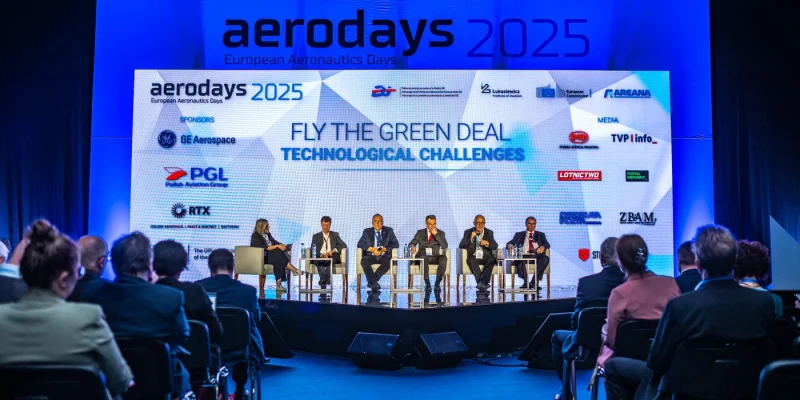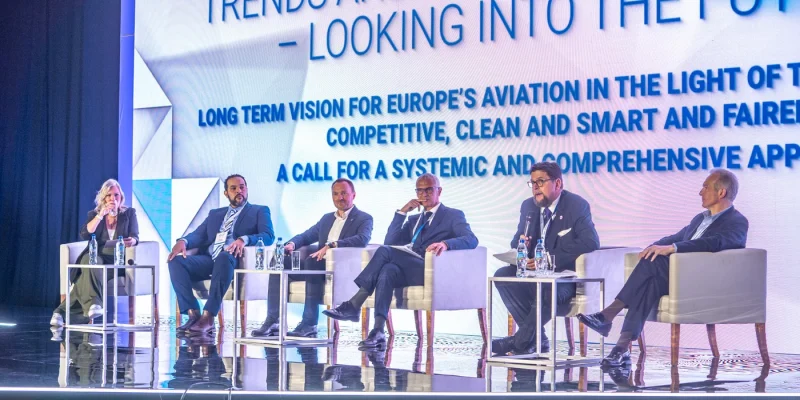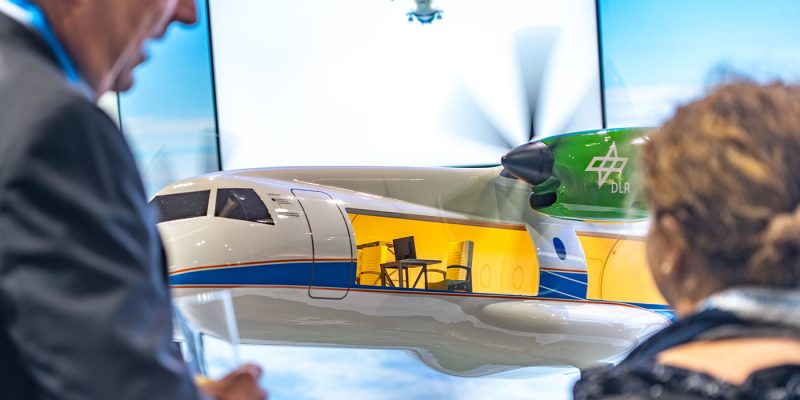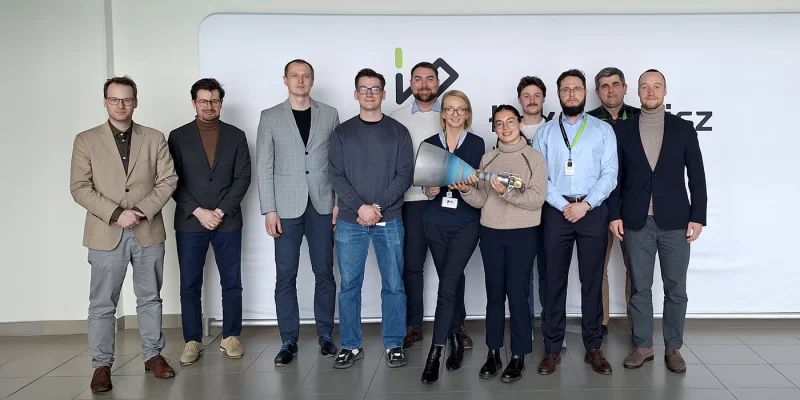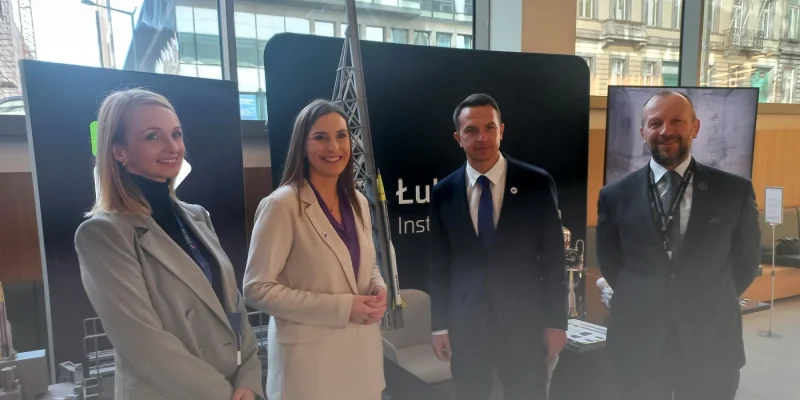While green storable high-performance hypergolic propellants have been the Holy Grail of space propulsion for decades, engineers and scientists from Łukasiewicz – Institute of Aviation (Łukasiewicz – ILOT) have successfully completed the key development step required to solve the challenge.
New propellant for future space missions
The developed propellant combination uses 98% hydrogen peroxide as oxidizer with a novel fuel. Its hypergolic properties make it perfect for steady-state and impulse operations. Being an alternative to heritage solutions and having a vacuum-specific impulse of 310 seconds, it is gaining wide commercial interest. Its use in bipropellant thrusters proved no issues, unlike in many previous international developments of this kind. The next efforts will be focused on introducing this innovative technology to new systems under development by key space system integrators.
The propellant developed at Łukasiewicz – ILOT is a safer alternative for personnel and the environment to the toxic materials currently in use – hydrazine derivatives and nitrogen oxides. The developed combination uses hydrogen peroxide (with a concentration of 98%) as oxidizer with a novel fuel.
It is characterized by high performance – a specific impulse in a vacuum of 310 seconds, as well as hypergolicity, i.e. the ability to spontaneously ignite when the components get into contact in the combustion chamber. It is an ideal candidate for use in rocket engines for future satellite platforms, landers and upper stages of launch vehicles.
The development of a new propellant combination is a long process requiring extensive interdisciplinary testing. Out team achieved this milestone, which may ultimately allow for decreasing costs of new propulsion systems, as well as costs of satellite launch preparations. This takes us one step closer to the goal of Polish fuel becoming a standard for next generation European spacecraft – says Dr Adam Okninski, director of the Space Technologies Center at Łukasiewicz – Institute of Aviation.
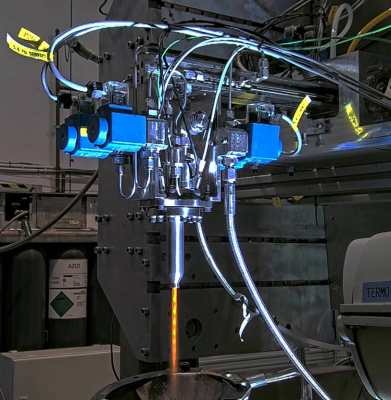
Key features:
• Specific impulse in vacuum is approximately 310 seconds – performance is comparable to currently used solutions.
• High density – requires smaller, lighter tanks and feeding systems in comparison to other propellants.
• Hypergolicity – ignites upon contact with 98% hydrogen peroxide without the need for additional ignition sources, simplifying the engine’s design and allowing for multiple uses.
• Fast and repeatable ignition – allows for use in small thrusters that require short and extremely precise thrust pulses for satellite attitude control.
• Widely available and used in the industry – no need for rigorous safety procedures compared to other propellants.
• Application in satellite propulsion (satellite thrusters) as well as in upper stages of launch vehicles (ease of multiple engine reignitions and shutdowns during maneuvers required to reach the target orbit).

Further research and development
The team of engineers and scientists at Łukasiewicz – ILOT has so far conducted over 160 tests of the new propellant using a 20 N thrust engine, designed for satellite propulsion, with a cumulative running time of 2 minutes. The shortest engine firings lasted 10 milliseconds, meeting the requirements of satellites in terms of generating short precise thrust pulses. Some of the engine tests were carried out as a part of “10-20N Green Bipropellant Thruster” project funded by the European Space Agency.
Highly repeatable ignition characteristics and stable and reproducible combustion were obtained. The new propellant is the result of testing several hundred different combinations of chemical compounds and the optimization of compositions was conducted at Łukasiewicz – ILOT.
Future work will focus on implementing this innovative technology into new systems and subsystems being developed by key satellite integrators operating in the European and global markets.
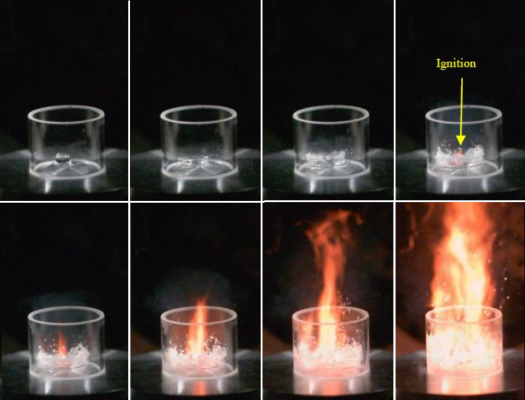
Space specializations
Łukasiewicz – Institute of Aviation is one of the most advanced research facilities in Europe, with traditions dating back to 1926. The institute closely collaborates with global aviation industry leaders such as Boeing, GE, Airbus, and Pratt & Whitney, as well as institutions in the space industry, including the European Space Agency. The institute’s strategic research areas include aviation, space, and unmanned technologies. It also conducts research and provides services for domestic and foreign industries in the fields of material, composite, additive, remote sensing, energy, and mining technologies.
Currently, the institute is involved in 30 research projects in the field of space technology, with about half of them in collaboration with the European Space Agency. Within national projects, it participates in the development of a Polish optoelectronic satellite constellation (PIAST project) within the SZAFIR program of the National Center for Research and Development.
In the area of space technology, the institute specializes in research and development of rocket technology, satellite propulsion, deorbiting modules and green propellants.
The institute is developing its own suborbital rocket, the ILR-33 BURSZTYN 2K. The basic version of the rocket has been successfully flight-tested, becoming the world’s first system to use hydrogen peroxide at a concentration exceeding 98% as a propellant.
_
The Łukasiewicz Research Network – Institute of Aviation is one of the most modern research facilities in Europe, with traditions dating back to 1926. The Institute closely cooperates with global tycoons of the aviation industry, such as: Boeing, GE, Airbus, Pratt & Whitney, and institutions from the space industry, including the European Space Agency. Strategic research areas of the Institute are aviation, space and unmanned technologies. It also provides research and services for domestic and foreign industries in the field of materials, composite, additive, remote sensing, energy and oil&gas technologies. More: ilot.lukasiewicz.gov.pl/en/
The Łukasiewicz Research Network offers businesses attractive, broad and competitive technological solutions. Łukasiewicz provides a unique “challenge system” powered by a group of 4,500 scientists, who take up a business challenge and present the entrepreneur with potential solutions. At the same time, it provides access to cutting-edge capabilities and unique scientific infrastructure in the country. Most importantly – the entrepreneur does not bear the cost of preparing the conception of the research works. Łukasiewicz conveniently meets the expectations of the business. The entrepreneur can contact Łukasiewicz through an online form on our website https://lukasiewicz.gov.pl/en/business/ but also directly in over 50 locations of Łukasiewicz Institutes and their branches throughout Poland. Each site provides the same, high quality, product or service. Łukasiewicz focused on research areas such as: Health, Smart and Clean Mobility, Digital Transformation and Green and Low-emission Economy.



